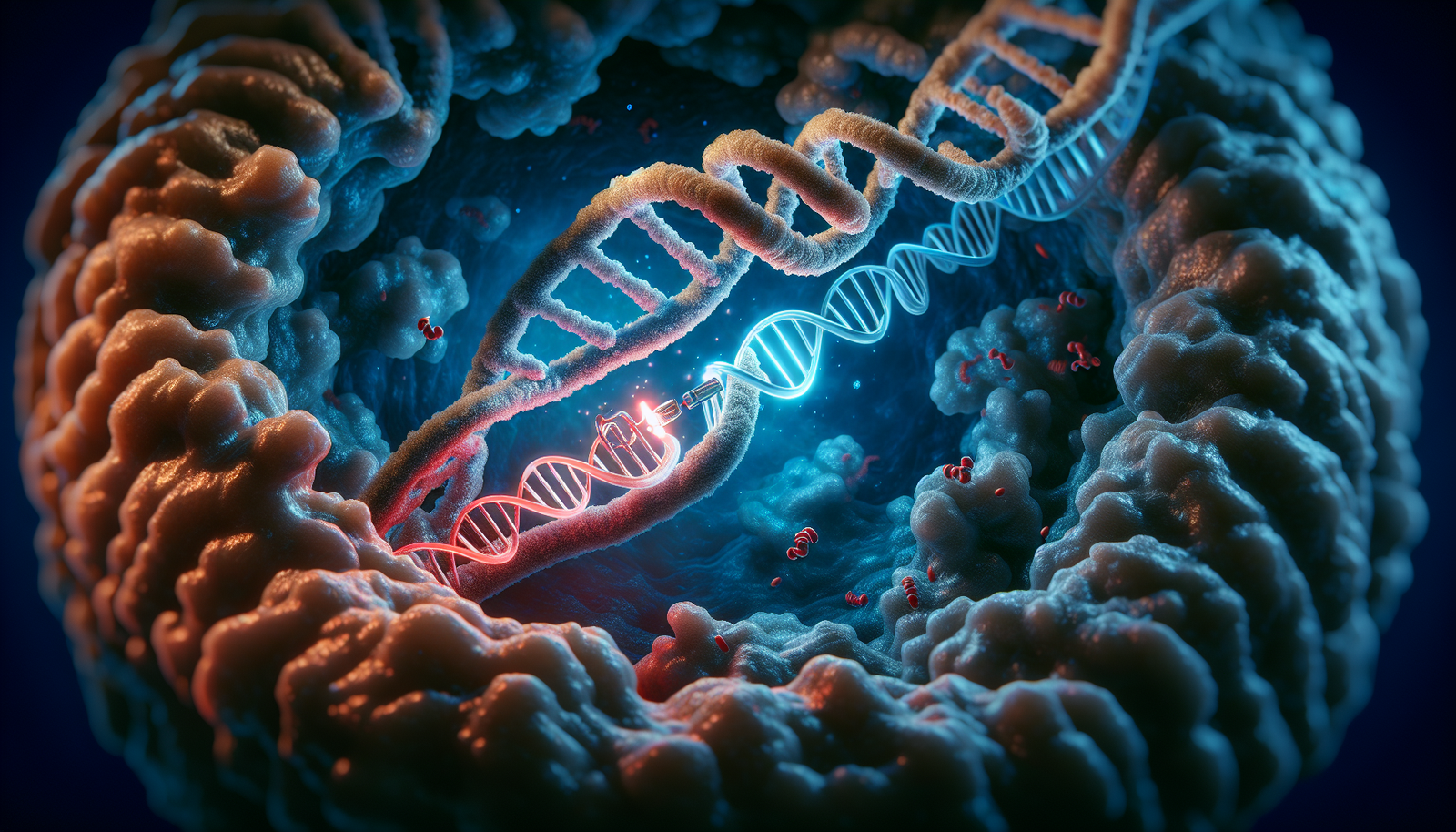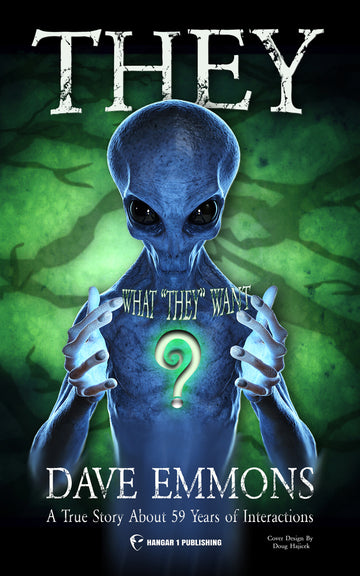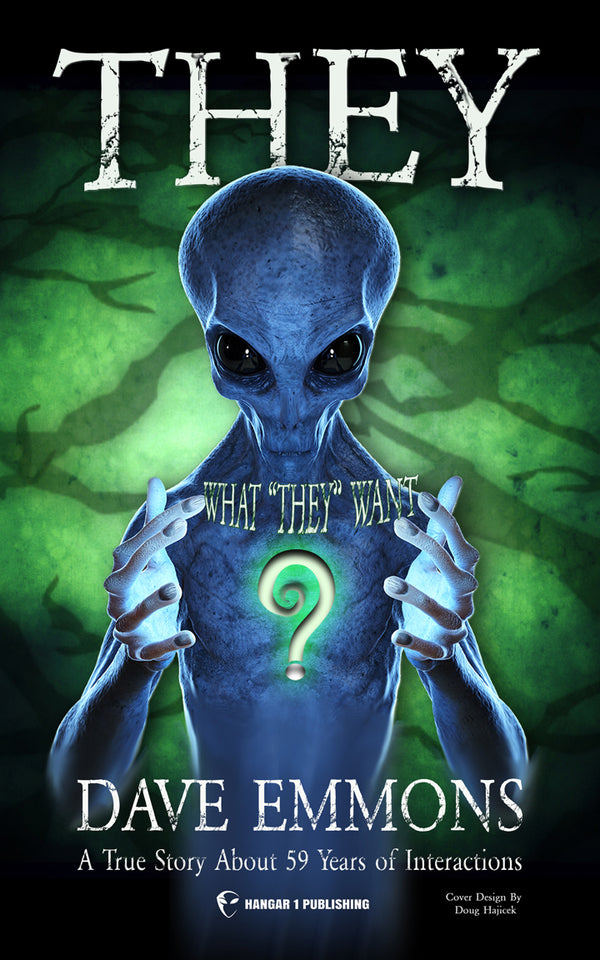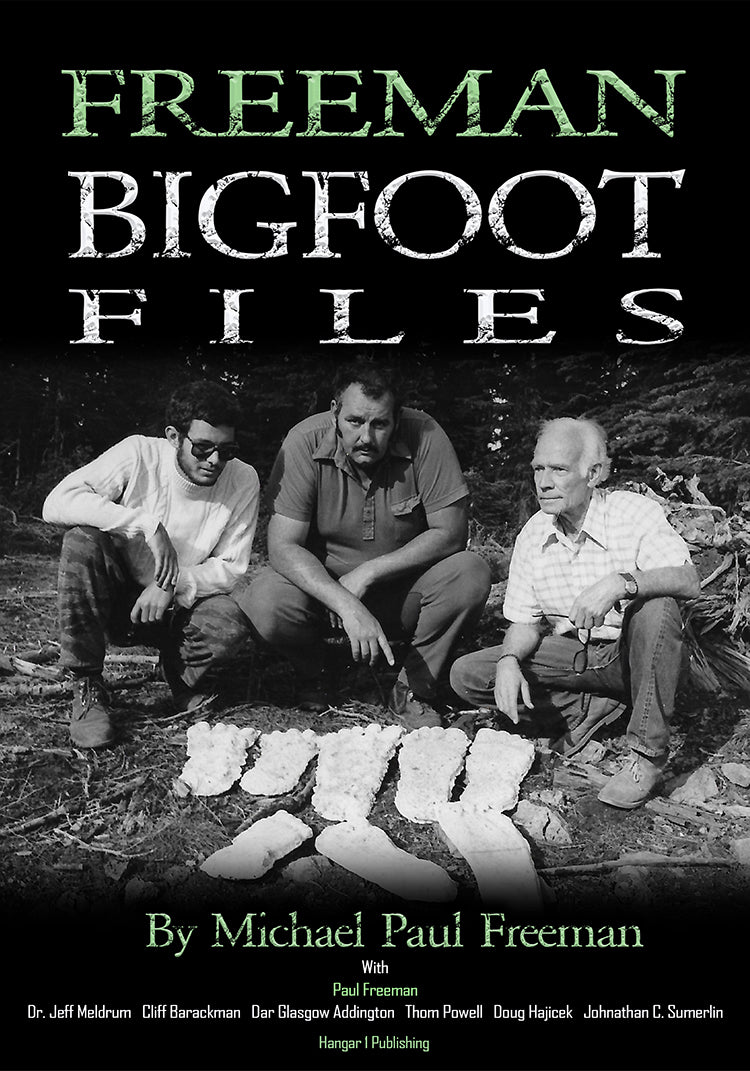ET Genetics: Master Switches for Cancer and Your Health

By Sanjay Kapoor, Ufologist
The letters "ET" might conjure images of a lovable alien with a glowing finger, but in the world of genetics, they stand for something far more powerful and intimately connected to your health. ET genetics refers to the ETS family of genes-a collection of molecular master switches that hold remarkable sway over whether your cells live, die, or spiral into the chaos of cancer.
These aren't just any genes. The ETS family represents one of the most influential groups of genetic regulators in the animal kingdom. Like conductors of a vast cellular orchestra, they wave their molecular batons to coordinate when cells divide, what type of cells they become, and even when they should gracefully exit the stage through programmed death. When these conductors lose their rhythm, the consequences can be devastating.
The 'ET' Revelation: Unmasking the Genetic Master Switch
It's the early 1980s, and scientists are puzzling over a peculiar chicken virus called E26. This virus had a nasty habit of transforming normal blood cells into cancerous ones, but nobody understood how. Then came the breakthrough that would reshape our understanding of cancer genetics.
The virus, it turned out, was a thief. It had literally stolen a piece of chicken DNA and incorporated it into its own genetic code. This hijacked gene, dubbed v-ets (for viral ets), was the smoking gun-the tool the virus used to turn healthy cells malignant. But here's where the plot thickens: this wasn't some exotic viral weapon. The stolen gene was actually a corrupted version of a normal cellular gene, what scientists call a proto-oncogene.
This discovery was like finding out your trusted security guard had been moonlighting as a bank robber. The same genes that normally help maintain order in our cells could, under the wrong circumstances, become agents of chaos. The v-ets finding cracked open a door to an entire family of related genes lurking in the DNA of virtually every animal on Earth, from fruit flies to humans.
What exactly are these ETS genes? At their core, they're blueprints for making transcription factors-proteins that bind to DNA and act as genetic switches. Think of your genome as a vast library containing thousands of instruction manuals (genes). Transcription factors are the librarians who decide which books get pulled off the shelf and read at any given moment. They're the reason a liver cell knows to make liver proteins instead of brain proteins, despite having the exact same DNA as every other cell in your body.
The ETS Family Portrait: A Dynasty of Genetic Regulators
The human genome contains 28 distinct ETS genes, making it one of the largest families of transcription factors we possess. Our mouse cousins have 27, while the humble fruit fly makes do with just 9. This evolutionary conservation speaks volumes-these genes are so fundamental to animal life that nature has carefully preserved them across hundreds of millions of years of evolution.
The family is organized into 12 distinct subfamilies, each with evocative names like ERG, TEL, SPI, and PEA3. While these might sound like alphabet soup, each represents a specialized branch of the family tree with its own particular talents and responsibilities.
What binds this diverse family together? The answer lies in a remarkable piece of molecular architecture called the ETS domain. This structure, consisting of about 85 amino acids folded into a distinctive "winged helix-turn-helix" shape, is the family's signature feature. It's the hand that grips the DNA, recognizing and binding to sequences containing a core GGA(A/T) motif.
But here's what makes the ETS domain truly special: it's not just a DNA-binding tool. It's also a social hub where proteins meet and mingle. This dual functionality-binding DNA while simultaneously interacting with other proteins-allows ETS factors to act as sophisticated integrators of cellular information. The ETS domain might be the constant across all family members, but it's the variable regions outside this core that give each member its unique personality and job description.
Some family members sport additional domains, like the enigmatically named Pointed domain. These modular add-ons are like specialized tools on a Swiss Army knife, expanding the functional repertoire of individual ETS proteins. The result is a family of regulators with both unity and diversity-shared DNA-binding abilities coupled with specialized functions.
The Conductors at Work: How ET Genetics Shapes Your Body
Imagine standing at Grand Central Station during rush hour, watching thousands of commuters flow through the terminal. Now shrink that scene down to the molecular level, and you have some idea of what's happening inside each of your cells. Chemical signals arrive from all directions-hormones announcing the body's needs, growth factors promoting expansion, stress signals warning of danger.
Many of these disparate communication highways converge at a single control point: ETS transcription factors. These proteins act as the cell's central processing units, integrating multiple input signals and translating them into coherent genetic programs. It's a job that requires both precision and flexibility.
The list of cellular processes under ETS control reads like a catalog of life's fundamental operations. They orchestrate cellular proliferation, making the critical "go/no-go" decisions about whether a cell should divide. During development, they guide the transformation of generic stem cells into specialized workers-turning a blank slate into a beating heart cell, a signal-conducting neuron, or a protective skin cell.
ETS factors also direct cellular migration, ensuring cells end up in the right place during embryonic development and wound healing. They manage the delicate process of angiogenesis, sprouting new blood vessels when tissues need more oxygen. Perhaps most soberly, they can issue death warrants, triggering apoptosis when cells become damaged or superfluous.
What makes ETS factors particularly sophisticated is their ability to play both sides of the regulatory fence. The same ETS protein can activate genes in one context while repressing them in another. This isn't indecision-it's adaptive intelligence. By partnering with different proteins and responding to various cellular conditions, a single ETS factor can fine-tune its regulatory output to match the cell's precise needs.
The Dark Side: When the Master Switches Cause Chaos
Given their commanding role in cellular life and death, it's no surprise that ETS genes figure prominently in cancer's rogues' gallery. But the way they contribute to malignancy is particularly insidious, often involving a genetic accident called chromosomal translocation.
Picture your chromosomes as carefully organized filing cabinets, each drawer containing specific genetic information. Sometimes, during cell division, these cabinets can break and get reassembled incorrectly. A piece from drawer 21 might end up glued to drawer 11. When this happens in just the wrong way, it can create a monstrous hybrid gene-a fusion that produces a chimeric protein with dangerous new properties.
Prostate Cancer: The TMPRSS2-ERG Fusion
The poster child for ETS-related cancer is prostate cancer, where a specific fusion has become infamous. In about half of all prostate tumors, a gene called TMPRSS2 gets accidentally fused to ERG, a member of the ETS family. The TMPRSS2 gene contains a promoter region-think of it as an accelerator pedal-that's particularly active in prostate cells and responsive to male hormones. When this accelerator gets hooked up to the ERG oncogene, it's like putting a brick on the gas pedal of a sports car. The result is uncontrolled cellular growth.
Ewing's Sarcoma: When EWS Meets FLI1
Ewing's sarcoma tells an even more dramatic story. This rare bone cancer, primarily affecting children and young adults, is defined by its ETS fusion. Here, the EWS gene fuses with FLI1 or ERG, creating a fusion protein that completely rewires the cell's genetic program. It's not just a matter of too much gas-the entire navigation system has been corrupted.
Leukemia: The TEL-JAK2 Connection
The leukemia connection brings us full circle to the family's viral origins. The TEL gene (also known as ETV6) can fuse with JAK2, a kinase involved in cellular signaling. This unholy alliance drives the development of acute lymphoid leukemia, echoing the transformation first observed in those virus-infected chickens decades ago.
Beyond Cancer: The Surprising Role of ET Genetics in Brain Health
Just when you think you have the ETS family figured out-master regulators gone rogue in cancer-they throw you a curveball. Recent research has uncovered an unexpected connection between ETS genes and Alzheimer's disease, but with a twist that challenges our usual thinking about "bad" genes.
The gene in question is SPI1, which produces an ETS factor called PU.1. This protein serves as a master regulator of immune cells, including microglia-the brain's resident immune patrol. Here's where it gets interesting: researchers discovered that people with a genetic variant causing lower levels of PU.1 actually had delayed onset of Alzheimer's disease.
This finding flips the script on genetic risk. We're used to thinking about mutations that break genes or make them overactive as the villains. But in this case, having genetically programmed lower levels of a perfectly normal gene appears to be protective. It's a "less is more" scenario that highlights the exquisite balance required for healthy gene expression.
The implications are profound. This discovery provides powerful support for the neuroinflammation theory of Alzheimer's, which proposes that chronic activation of the brain's immune system contributes to the disease's progression. By turning down the volume on PU.1, and thereby dampening the immune response, the brain may be better able to resist the ravages of Alzheimer's.
The Investigator's Toolkit: How We Study ET Genetics
Uncovering these genetic mysteries requires a sophisticated arsenal of molecular tools. When hunting for large-scale gene fusions like TMPRSS2-ERG, scientists often turn to Fluorescence In Situ Hybridization (FISH). This technique uses fluorescent probes that paint specific genes in glowing colors. If ERG has jumped to a new chromosomal neighborhood to partner with TMPRSS2, the colored signal appears in the wrong location-a molecular smoking gun visible under the microscope.
Key Research Methods
- Next-Generation Sequencing: For finer detective work, Next-Generation Sequencing reads DNA like a super-powered scanner, churning through millions of genetic letters to find exact fusion breakpoints or tiny mutations. It's the difference between spotting a misplaced building from an airplane versus finding a single misspelled word in a library.
- Polymerase Chain Reaction (PCR): But sometimes it's not enough to know what genes are present-you need to know how loudly they're shouting. Polymerase Chain Reaction acts like a molecular volume meter, measuring how much RNA a gene produces. This is crucial for understanding dosage-sensitive effects, like determining whether someone carries the protective "low-PU.1" variant for Alzheimer's.
- Genome-Wide Association Studies (GWAS): The real breakthrough in connecting common genetic variants to complex diseases comes from these massive investigations that scan the genomes of thousands of people, using statistical power to find subtle links between genetic variations and disease-relevant tissues. It's like solving a crime not through a single dramatic clue, but by analyzing patterns across an entire city's worth of evidence.
The Living Blueprint: ET Genetics and Your Health
As our understanding of ET genetics expands, so does the gap between what we can discover and what current genetic tests can reveal. Those direct-to-consumer DNA tests that promise to unlock your genetic secrets? They're looking for common, well-known variants and would completely miss the complex chromosomal rearrangements that create cancer-driving ETS fusions.
This limitation underscores the vital role of genetic counselors and clinical geneticists. When an ETS-related disorder is suspected-whether due to an unusual cancer presentation or a strong family history-these professionals know to order specialized tests like FISH or comprehensive sequencing that can detect these elusive genetic events.
The field of ET genetics stands at a thrilling crossroads. We've identified the villains-fusion proteins like TMPRSS2-ERG and EWS-FLI1-and we're beginning to understand the more subtle players, like PU.1's role in neuroinflammation. The next challenge is translating this knowledge into therapies. Can we design drugs that specifically block fusion oncoproteins? Could we develop medicines that fine-tune PU.1 activity to protect against Alzheimer's?
With 28 human ETS genes still yielding their secrets, this family of master switches continues to surprise us. From their chance discovery in a chicken virus to their emerging role in neurodegenerative disease, ETS genes remind us that in biology, the most powerful players often work behind the scenes. They're the conductors we never see, the librarians we never meet, quietly orchestrating the symphony of cellular life-until something goes wrong, and their true power is revealed.
From Bigfoot to UFOs: Hangar 1 Publishing Has You Covered!
Explore Untold Stories: Venture into the world of UFOs, cryptids, Bigfoot, and beyond. Every story is a journey into the extraordinary.
Immersive Book Technology: Experience real videos, sights, and sounds within our books. Its not just reading; its an adventure.


























